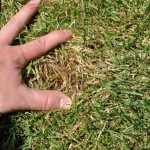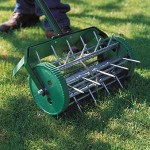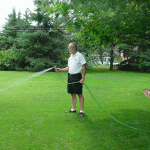Lawn Disease, They Destroy Lawns Everday. Learn how to Protect and how to Destroy them.
There is perhaps no single act more authentically American than fostering a beautiful, green lawn. There are magazines, books and even television shows dedicated to keeping your lawn green and healthy for as long as the seasons allow, but sometimes, unsightly yellow spots and dead areas can crop up out of nowhere. Most common lawn diseases are caused by fungus, but identifying and treating the particular disease that is turning your grass yellow is sometimes easier said than done. If you are serious about keeping your lawn in tip top shape, make sure you keep a lawn diary that charts the type of grass seed you are using, when you water, what fertilizer you choose to use and how often you water.
Lawns are never perfect. Even the greatest lawns have some problems owners have to address. Weakened, thinned, and discolored turf are often signs of a possible lawn disease. It is important to be diligent in identifying the possible cause to be able to apply the right solution. Disease can be caused by anything from nutritional deficiencies, drought, bacteria, fungi, or viruses.
There are three major factors that cause Lawn Disease
Vulnerable Plants
Appropriate Conditions
Pathogens
It is much easier to take preventative measures related to these three conditions rather than to heal an infected lawn. While you can’t do much to prevent your lawn from having pathogens, you can influence the conditions and vulnerability of your grass. Proper lawn care is the best thing you can do as a lawn owner to prevent disease. You can apply the right amount of fertilizer and water, while keeping the soil loose and aerated. You can also make sure to mow properly and encourage good drainage.
By far, the most popular and common lawn diseases are melting out and leaf spot. Both of these conditions are caused by common grass funguses, but there is a chance you may be enabling this condition without even knowing it. Leaf spot appears on individual blades of grass as purple or brown spots that begin to take over large swathes of your lawn over a period of weeks. If your grass is growing too thickly in spots or if you are using too much nitrogen in your fertilizer, you can accidently help to bring on this condition in your lawn. You can also enable this condition by mowing too closely and by not allowing enough sunshine to get to your grass. If you can aerate lawn a couple times a year, it can help prevent disease by developing healthier soil. Check to see what sort of proper fertilization schedule your particular kind of grass needs and make sure you are watering on a proper schedule and you will likely see an improvement in your lawn right away.
Necrotic ring spot is another common lawn destroyer that you may encounter. This condition is sometimes known as frog eye syndrome because of the ugly pattern of dead and infected grass it leaves behind. You may also notice a depressed area in the middle of an otherwise healthy lawn. This condition is most common during the beginning of your growing season and again at the end and is found on lawns that need a lot of help growing or on ones that are treated frequently, such as golf courses. You’ll notice a reddish hue in the infected areas that stand out against the healthy green of the grass around it. Change your watering schedule, fertilizer usage and consider enlisting the help of fungicides to beat necrotic ring spot.
If you have a lawn that is especially shady, you may have the same problem that a poorly ventilated bathroom might have: mildew. Powdery Mildew leaves a white residue on the blades of grass that can seriously inhibit natural growth. In serious instances, the powdery mildew can get so bad that it eventually yellows the blades and kills off an entire section of your lawn. Try and trim away hedges, bushes and trees that are killing off access to sunlight in infected areas and consider replacing the variety of grass you’ve chosen for that area with one far less susceptible to mildew.
Technorati Tags: Lawn Disease, grass, lawn
 Thatch is a lawn condition caused by root and steam buildup. A Layer of thatch is a barrier to everything your lawn needs to be healthy: air, water, and nutrients. Several things can cause thatch–too much nitrogen, mowing to short, and shallow watering. Use a garden or thatch rake or power dethatcher to remove thatch if your lawn has a problem.
Thatch is a lawn condition caused by root and steam buildup. A Layer of thatch is a barrier to everything your lawn needs to be healthy: air, water, and nutrients. Several things can cause thatch–too much nitrogen, mowing to short, and shallow watering. Use a garden or thatch rake or power dethatcher to remove thatch if your lawn has a problem. Punching holes in your lawn loosens soil, helps drainage, and promotes root growth. It also helps reduce thatch. Plan to aerate every few years in spring or fall.
Punching holes in your lawn loosens soil, helps drainage, and promotes root growth. It also helps reduce thatch. Plan to aerate every few years in spring or fall. Lawns become increasingly tolerant of drought and develop deeper root systems when they are watered deeply and less often. Aim for about 1 inch per week.
Lawns become increasingly tolerant of drought and develop deeper root systems when they are watered deeply and less often. Aim for about 1 inch per week.